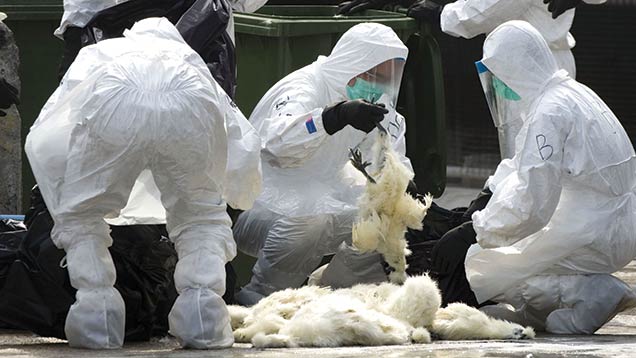US bird flu slowing down, but economic effects remain
 © Lui Siu Wai/ Rex Shutterstock
© Lui Siu Wai/ Rex Shutterstock The rate of infection in the US avian influenza outbreak appears to be slowing, but the economic effects will be felt well into 2016.
An updated assessment by the University of Illinois notes that, for the week beginning 25 May, there were 16 detections and “only” 2.5 million birds affected – down 22% from the previous week.
“In fact, for five consecutive weeks the total number of weekly bird flu confirmations has decreased from the late-April high of 12.2 million birds,” the report by economists John Newton and Todd Kuethe notes.
See also: University of Illinois’ initial impact assessment
On the turkey side of things, the report remains relatively upbeat. While official figures suggest a 7% drop in the number of turkey hatching eggs on 1 May compared with a year ago, total turkey production was up 7% in the first four months of the year.
“Much has been made of a potential supply disruption affecting the availability of turkeys during the Thanksgiving holiday. At this point in time, data does not point toward a high likelihood of a turkey shortage during Thanksgiving 2015.”
But the egg sector is being harder hit.
Government data for table egg layers on 1 May put the national flock at 296 million birds, down 3% on the previous year. “Given the magnitude of the bird flu outbreak in egg layers, it is anticipated that the June USDA updates will reveal additional declines in egg production.”
Egg prices are already “offering clues on tightness in supply and demand”, says the report. “During May 2015, when the bird flu infection rate was the highest, breaker egg prices increased by 220% to more than $2/dozen [£1.30].”
Higher prices actually led to a fall in consumption and an increase in stock inventories. Combined with relatively cheap feed prices, incentives exist for producers to quickly increase supply. The Netherlands has also recently been reinstated as a supplier for eggs.
So at farm level, the University of Illinois report suggests recovery from avian influenza should be relatively quick.
But the trade implications will be longer lasting. Currently some 75 countries have full or partial trade bans in place, and exports of poultry and poultry products are down 7% year-on-year.
“Given that many export bans were effective beginning in May, the potential exists for continued declines in US poultry exports,” says the report.
“With the potential for bird flu to re-emerge in the fall, trade complications could continue for the foreseeable future. Such a scenario could result in increasing cold storage levels and declining prices for some poultry parts.”
So far, more than 45 million birds across 207 sites have died in the outbreak, and the USDA has sanctioned $130m (£85m) in indemnity payments.
